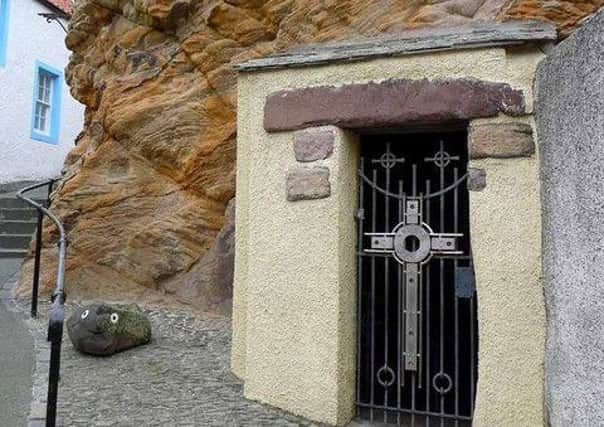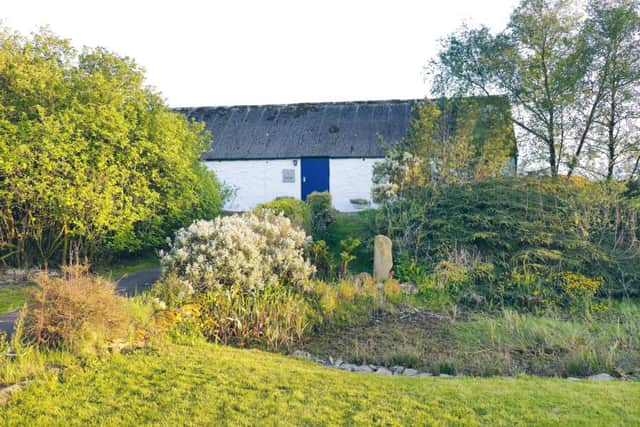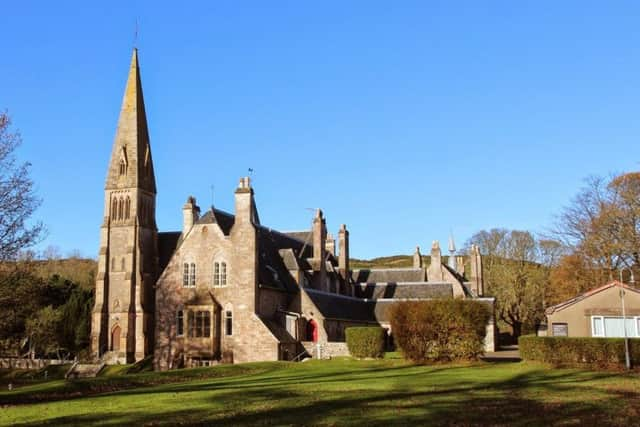The top five tiny places to visit in Scotland


1) The Swallow Theatre, Whithorn, Dumfries and Galloway
Lost in pasture on a peninsula of Dumfries and Galloway that is seldom troubled even by those tourists who make it as far as the literary hub of Wigtown, there is a converted byre. Unusually, that byre was not converted from housing cows to housing holidaymakers but became a theatre, the smallest one in Scotland. The Swallow Theatre has just 50 seats. The website warns that these are “quite comfortable but some people like to bring a cushion”. Even this is still something of a step up though because there was a time in the theatre’s early days when audience members were asked to bring along their own chairs. It’s all part and parcel of the nature of the place – “the play’s the thing” here (or at least “the performance is the thing” – and had Shakespeare thought to write that instead, the phrase would enjoy a far wider application today than it does) and if the audience has to muck in a little from time to time then that’s part of the community spirit the theatre wishes to engender.
But this is not just a place to see others perform. If you fancy yourself as an aspiring thespian, or just want to dip your toe in the water, you can attend one of the theatre’s monthly play readings. Everyone can have a go and plays include classics such as J B Priestley’s An Inspector Calls. Tea and coffee provided.


2) Cathedral of the Isles, Great Cumbrae
Advertisement
Hide AdConventional wisdom would have it that – laying spiritual considerations aside – the whole point of a cathedral is that it is grand. The cathedral is a symbol of majesty and power and, as such, demands to be built to a larger scale. Three cheers then for the Cathedral of the Isles at Millport on the island of Great Cumbrae, for it has well and truly bucked the trend.
Britain’s smallest cathedral had a rather modest start in life, as a collegiate chapel. Its smallness is made very apparent by the fact that there’s only enough room in the nave to seat 80 people. The space is lit by a rainbow of coloured sunlight pouring through stained-glass windows. You should also keep your eyes peeled for something one might not expect on a Scottish island: some Russian Orthodox icons. They’re at the eastern end of the nave and were a gift to the cathedral in the late 19th century.
3) The XT-craft of Aberlady Bay, East Lothian


It’s not every beach that plays host to a piece of Second World War history. Far out across the sands, almost at the low-tide line, is a bulky concrete block. Flanking it are a couple of rather more indistinct shapes, as if two large slugs had fetched up there. These are the wrecks of two midget submarines used for training (what the ‘T’ in ‘XT’ stands for).
Although midget submarines were to play a strategic rôle in the Normandy landings, their main task was to attack German battleships based on the Norwegian coastline. One particular thorn in the Allies’ side was the KMS Tirpitz, a battleship with guns that could fire shells 22 miles, sinking ships before their crews had any idea they were in danger.
Three X-craft were despatched to attempt to sink the Tirpitz while it lay up in Kafjord on the Norwegian coast. One of the three managed to get beneath the ship, set its charges and move away. The explosions are said to have lifted the Tirpitz 6ft clear of the water. She took in a great deal of seawater but was not sunk. However, the battleship was put out of commission for six months, a fact that the Germans managed to hide from the Allies. Half of the 12 crewmen involved in the attack lost their lives and the other half were captured.
After the end of the war, these two XT-craft were towed to the spot they now lie on, tethered to a concrete tank trap, and used as targets by Seafire and Mosquito aeroplanes. It’s a shame that they were not kept intact as a tribute to the bravery of the men who sailed in them and a reminder of the sheer awfulness of war, but at least their presence on the sands at Aberlady Bay means that the service their crews rendered is not completely forgotten.
4) St Fillan’s Cave, Pittenweem, Fife
Advertisement
Hide AdThe tale goes that, St Fillan, coming across the tiny cavern in Pittenweem, is said to have seen its possibilities as a place for peaceful study. However, as the day wore on and the light became crepuscular, the saint could no longer see to read or write. He petitioned God on the matter and, for answer, his left arm was made luminous. Rather than scaring the life out of him, which in the circumstances would have been an understandable reaction, Fillan said his thanks and henceforth was never without light when he needed to work on a sermon. Why he could not have lit a torch, as anyone else might have done, is not a question that is ever addressed. Thinking differently is doubtless all part and parcel of being a saint.
But none of that makes his cave any less delightful to visit. The charm starts with its very location. It’s not on the coast facing the sea or high up on a hillside but at the side of a broad path in Pittenweem. A sort of rustic stone porch has been built around the narrow entrance, which is further guarded by an iron gate emblazoned with a Celtic cross – it’s a tremendously peaceful place. The clamour of the world outside is dulled and you can be still in a space where the constant demands on your senses are abated for a moment.
5) Schoolhouse Cinema, Shetland
Advertisement
Hide AdNot only is this the smallest cinema in Scotland but it must surely have one of the most meagre potential audiences of any picturehouse on the planet. The little archipelago of Out Skerries, off the east coast of Shetland Mainland, has two inhabited islands whose combined population as recorded by the most recent census was just 74. It’s probably as well that the owner – magician, entertainer and firebreather Chris Harris – does not intend the cinema to be a money-spinner. Indeed, not only is entry free to his 20-seat palace of film, which he opened in 2017, but the popcorn, hotdogs, Slush Puppies, drinks and snacks are all on the house too.
You’ve got to take your hat off to Harris – not only is he providing a cinema where no cinema might ever have been imagined to take root but, being the showman that he is, he could easily have installed 18 seats instead of 20 and claimed the title of Smallest Cinema in the UK. He told the Shetland Times: “I’ve always found in life when things are getting a bit hard there’s nothing like going to the cinema and escaping; even if it’s an hour-and-a-half or two hours of escapism, it’s something for the soul.” All power to his popcorn.
Tiny Britain: A Collection of the Nation’s Overlooked Little Treasures by Dixe Wills is available now in hardback from AA Publishing at £16.99.